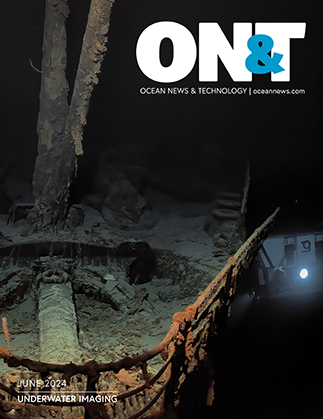Deep-sea exploration represents a monumental endeavor, a frontier that remains shrouded in mystery, with approximately 80% of the world’s oceans awaiting in-depth investigation. The technologies currently deployed for such missions are intricate, often prohibitively expensive, and rely on bulky equipment. However, at SEABER, they harbor a resolute belief that the future of ocean exploration lies in a different direction—a direction that entails the deployment of thousands of high-performance, reliable, and cost-effective micro–autonomous underwater vehicles (AUVs).
The vision is clear: to revolutionize ocean exploration by developing novel tools and methodologies that enable the mass exploration of the seabed. This ambitious pursuit marries the realms of marine biology and ecology with the precision of engineering sciences. To achieve this, SEABER is dedicated to ushering in a new era of underwater biodiversity and ecosystem exploration.
The cornerstone of SEABER’s endeavor involves the development of innovative scientific methodologies and the creation of AUVs equipped with state-of-the-art sensors, such as environmental DNA (eDNA) samplers. These advanced sensors serve as the eyes and ears of their micro-AUVs, allowing us to capture a comprehensive understanding of the deep-sea environment.
SEABER’s flagship project aspires to assemble a fleet of ten micro–autonomous underwater vehicles, each armed with a unique set of cutting-edge sensors. These sensors include eDNA samplers, passive acoustic monitoring systems, CTD (Conductivity, Temperature, and Depth) probes, magnetometers, and side-scan sonars, collectively enabling large-scale mapping and characterization of biodiversity on the ocean floor.
The mission they’ve set forth is nothing short of remarkable:
- Swarm with 10 micro-AUVs: Working in harmony, these micro-AUVs will exhibit the collaborative behavior akin to a swarm of aquatic explorers, each contributing to the collective knowledge of the oceans.
- Precise geolocation with USBL (Ultra-Short Baseline): SEABER’s vehicles will navigate with pinpoint accuracy, ensuring that data collected is precisely mapped to its source, enhancing the reliability of their findings.
- Up to 500 kilometers per mission: SEABER’s micro-AUVs will possess the endurance to traverse substantial distances, enabling comprehensive exploration of vast expanses of the deep ocean in a single mission.
- Mission costs three to five times lower than current technologies: Their commitment to cost-effectiveness ensures that these groundbreaking explorations can be carried out without breaking the bank.
- Easily mobilized ships of opportunity: By designing their micro-AUVs to be deployable from readily available vessels, SEABER makes ocean exploration more accessible than ever before.
Their objectives extend beyond simply collecting data; they aim to redefine the paradigms of exploration. To achieve this, SEABER is pioneering new deployment methods and data collection techniques:
- 3D Spatialization of Measurements (Water Column Structure): By creating a three-dimensional map of the water column structure, SEABER gains insights into the dynamic nature of ocean ecosystems.
- Fine-scale Mapping of Deep Benthic Habitats: Their micro-AUVs will meticulously map the deep-sea benthic habitats, providing invaluable insights into the living organisms and their environments.
- Non-intrusive Sampling for Biodiversity: They have developed non-intrusive sampling methods for fish and crustacean descriptors, preserving the delicate balance of deep-sea ecosystems.
- Passive Listening to Acoustic Landscapes (PAM): Leveraging their CTD data, SEABER employs passive acoustic monitoring to decode the hidden symphony of the deep, where sound waves carry crucial information.
Furthermore, SEABER recognizes the importance of sharing their discoveries. That’s why, to bring together the data obtained by the micro-UAVs, an online service called CARTHA, with a web interface, will be developed. This platform will serve as a hub for gathering and sharing geo-referenced oceanographic data obtained from their fleet of underwater micro-drones.
To put their concepts and technologies to the ultimate test, their project will embark on daring expeditions to remote and challenging locales, including Saint Pierre and Miquelon, and Antarctica. These extreme conditions will serve as crucibles for SEABER’s innovations, proving their mettle and ensuring they are ready to conquer the most enigmatic depths of the planet’s oceans.
In conclusion, SEABER stands at the forefront of a new era in deep-sea exploration. Their vision, bolstered by cutting-edge technology and unwavering dedication, is poised to unveil the mysteries hidden beneath the ocean’s surface, ultimately reshaping their understanding of the world’s final frontier.
The project is funded by the French government through the France 2030 program.

